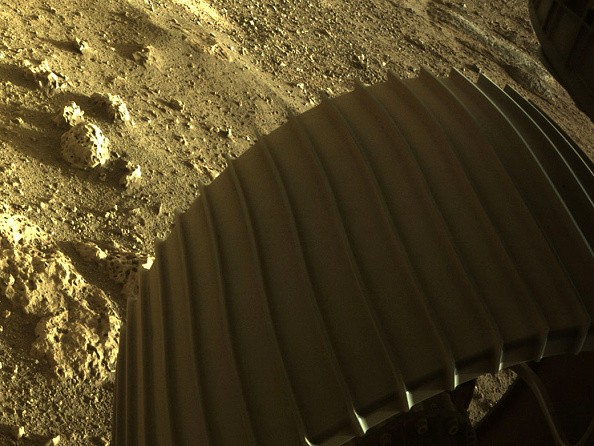The NASA Perseverance Rover is celebrating the first anniversary of its Mars landing. And since then, the rover has been instrumental to giving astronomers a deeper understanding of the Red Planet as a whole.

To commemorate the event, NASA posted this tweet where mission leaders discuss a year's worth of discoveries on Mars, and share a potential preview of what's coming for the rover in the foreseeable future. Fans can also ask the team leaders their own questions by fielding them in the comments:
We’re celebrating @NASAPersevere’s upcoming landiversary! Join us Feb. 17 at 7pm PT/10pm ET/0300 GMT as mission team leaders discuss the rover's incredible first year on Mars. Comment your questions below to get them answered live on the show. https://t.co/okJORsa0CC pic.twitter.com/eZhlhrADQQ
— NASA JPL (@NASAJPL) February 15, 2022
Aside from the Q&A session, the agency is also hosting a celebratory stream on YouTube scheduled for 4PM EST:
An entire Earth year on Mars might not sound too impressive to some, but it is already a landmark achievement for the relatively new Perseverance rover. And all of that time was never for nothing, as it has made multiple big discoveries which shed brand new light on the Red Planet's distant past.
Confirming The Existence Of Water On Mars-At Least In The Past
This is one of the most important discoveries ever made by NASA using the Perseverance rover. They finally confirmed that water, at least in the past, covered parts of the Martian surface by discovering evidence of certain minerals.
These aforementioned minerals were large olivine crystals covered in pyroxene crystals, which according to EarthSky.org is evidence that magma and water flowed on the planet. Perseverance made this discovery in the very area where it landed-Jezero crater, which used to be an ancient lakebed.

As per their analysis, it looks like the rock which formed from the lava flow has been altered by water several times. Furthermore, they discovered that some of the rocks there contain organic molecules, according to NASA. This is an extremely important discovery in the hunt of ancient Martian life.
Read Also : NASA Mars Rover Captures Image Of A 'Reclining Person'--But It's Definitely NOT What You Think It Is
Ancient Flash Floods Once Flowed On The Planet
In just another confirmation that Mars wasn't always the dry, super-cold hellscape it is, the NASA Perseverance rover has found evidence of ancient flash floods on the planet.
According to a report by NBC News, these flash floods were apparently powerful enough to move boulders weighing tons. NASA scientists conclude that the ancient lake bed of Jezero crater was once fed by a river which flowed with such power not seen in any river on Earth.
They call these "rushing rivers" and posit that they might have existed around 3.5 million years ago, meaning the Jezero crater could have been "perfect" for life until things changed.
A 'Mysterious' Purple Rock Coating Could Provide Clues To Ancient Life
In yet another major discovery made in the Jezero crater, the Perseverance rover spotted a color that's not one you'd normally associate with Mars: purple. According to National Geographic, scientists have never seen the purplish coating in past rover missions before.
But while this one is mostly making scientists scratch their heads, they are theorizing that the coating could contain a distinct mineral makeup. The minerals it might contain could serve as some sort of record of the conditions which helped them form, allowing scientists to recreate long-gone environments. As such, they're also hoping that it might hold clues to the existence of ancient life on the Red Planet.
Related Article : NASA's Perseverance in a Rocky Situation Due to Clogged Rocks-What's Next for the Martian Rover?
This article is owned by Tech Times
Written by RJ Pierce
ⓒ 2025 TECHTIMES.com All rights reserved. Do not reproduce without permission.




